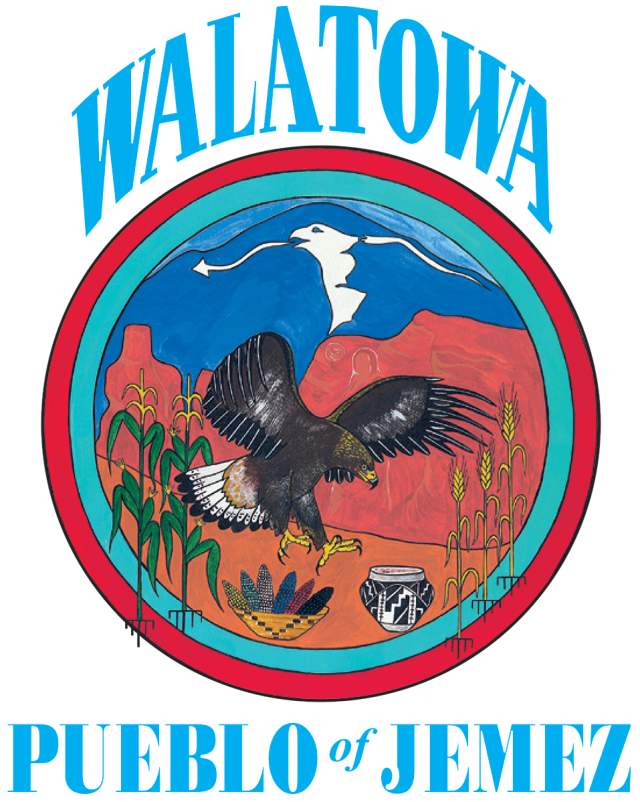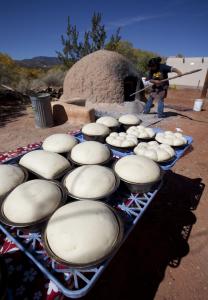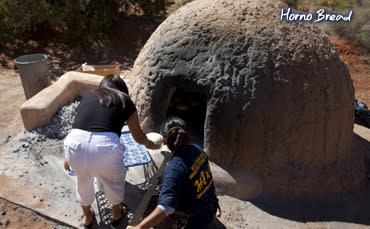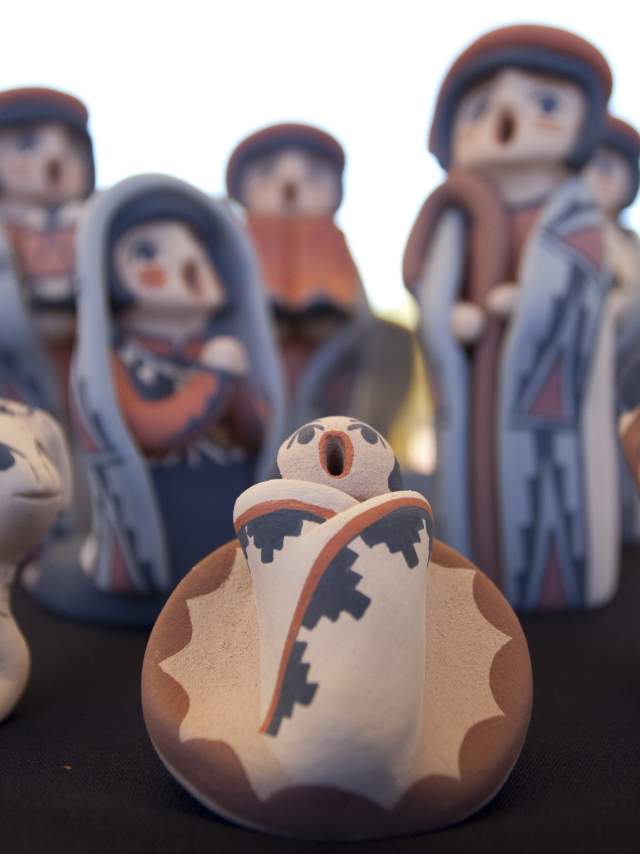Jémez
The Pueblo of Jémez is the only remaining Towa-speaking pueblo.
ADDRESS:
Jémez Pueblo Visitors Center
7413 Highway 4
Jémez Pueblo, NM 87024
PHONE:
(575) 834-7235

Native communities, sites and events held on Tribal lands are open to the public at the Tribal communities' discretion.
Schedules may change suddenly, always call ahead before planning your visit.
The Jémez Pueblo is surrounded by colorful sandstone mesas and serves as the gateway to the Cañon de San Diego and the Jémez Mountain Trail National Scenic Byway. The Pueblo itself is located 27 miles northwest of Bernalillo.
 In the 1830s, survivors of Pecos (Cicúye) Pueblo, a once-mighty trading center now in ruins, joined Jémez. Many Pecos Pueblo warriors at first resisted the invading Spanish forces under Diego de Vargas, but 12 years after the Pueblo Revolt in 1680, they allied with the conquerors.
In the 1830s, survivors of Pecos (Cicúye) Pueblo, a once-mighty trading center now in ruins, joined Jémez. Many Pecos Pueblo warriors at first resisted the invading Spanish forces under Diego de Vargas, but 12 years after the Pueblo Revolt in 1680, they allied with the conquerors.
 As many as 70% of the 1,890 Jémez Indians were living on their reservation lands in the early 1970s. Though by this time an increasing number were switching to wage-earning work rather than agriculture. The Pueblo residents continued to raise chili peppers, corn, and wheat, to speak their Native language, and to maintain customary practices.
As many as 70% of the 1,890 Jémez Indians were living on their reservation lands in the early 1970s. Though by this time an increasing number were switching to wage-earning work rather than agriculture. The Pueblo residents continued to raise chili peppers, corn, and wheat, to speak their Native language, and to maintain customary practices.
Running, an old Jémez pastime and ceremonial activity, grew even more popular than it had been before World War II. Prior to the advent of television at Jémez, tales of running feats had been a major form of entertainment on winter nights. Races continued to hold their ceremonial place as the years passed, their purpose being to assist the movement of the sun and moon or to hasten the growth of crops, for example. At the same time, they became a popular secular sport. The year 1959 saw the first annual Jémez All-Indian Track and Field Meet, won by runners from Jémez seven times in the first ten years. A Jémez runner, Steve Gachupin, won the Pikes Peak Marathon in 1968, setting a record by reaching the top in just 2 hours, 14 minutes, 56 seconds.
 Jémez's main village, Walatowa, is open to visitors only during feast days. Otherwise, the Pueblo is closed to the public year-round. Visitors are always welcome at the Walatowa Visitor Center, which features a reconstructed traditional Jémez field house, photo exhibit, gift shop, cultural exhibits, a nature walk and an interpretive program.
Jémez's main village, Walatowa, is open to visitors only during feast days. Otherwise, the Pueblo is closed to the public year-round. Visitors are always welcome at the Walatowa Visitor Center, which features a reconstructed traditional Jémez field house, photo exhibit, gift shop, cultural exhibits, a nature walk and an interpretive program.
Tour the Jémez Red Rocks Recreation Area and sample Indian foods, arts and crafts. A visit to the ancestral village of Giusewa, at Jémez State Monument on N.M. 4 near the town of Jémez Springs, is another interesting option. Photography, sketching and recording are prohibited at the pueblo but encouraged at Red Rocks.
